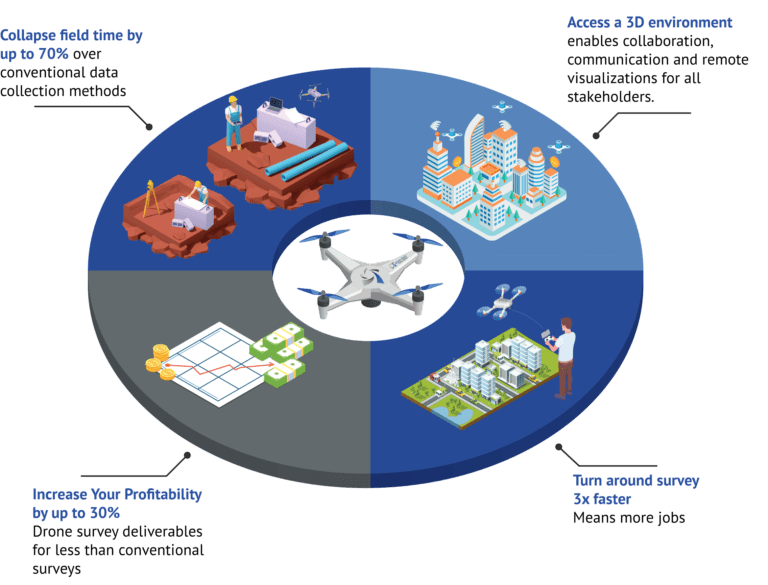3D Modelling 101: Overview and Usage
Technology transforms nearly every business. Three-dimensional (3D) modelling is one type of technology that lately has had a significant influence on a variety of sectors. Among other advantages, 3D modelling for aerial solutions and machine control can improve the precision of equipment operation, boost job site productivity, and save expenses.
Many of the objects we see every day are shaped using 3D modelling. Whether in video games or drone surveying and mapping, most of you have profited from 3D modelling technology in some way or the other. Read on to know more.
What is the use of 3D modelling?
The process of constructing a three-dimensional representation of an item using specialist software is referred to as 3D modelling. A 3D model of the thing can be used to illustrate its size, shape, and texture. Both actual objects and plans that haven't yet been realised in reality can be turned into three-dimensional (3D) representations.
What is the history of 3D modelling?
Engineering and manufacturing, as well as digital animation for movies and video games, all employ 3D modelling to create 3D models. Computer graphics were originally used for engineering and scientific applications in the early 1960s, and by the late 1960s, CGI was being used for creative expression.
The use of 3D modelling expanded along with its acceptance, and it is now used in a wide variety of commercial design and manufacturing processes as well as in the production of movies and video games. Stereolithography (SLA), which gave rise to the first 3D printing technique, originally appeared in 1986 and is the source of the STL file's well-known moniker.
What are the types of 3D modelling methods?
The following list includes a few main categories of 3D modelling techniques.
- Polygonal modelling
In a polygonal model, a polygon mesh is created by connecting points in three-dimensional space with line segments. Planar files for polygonal meshes are those that are represented by a collection of flat facets. Given that they are lightweight and generate visuals rapidly, polygonal meshes are useful. An excellent example is 3D drone visualisation.
- Curve modelling
Another kind of modelling that creates surface geometry using curves. NURBS (non-uniform rational B-splines) are used in both parametric (based on geometric and functional connections) and freeform curve modelling to define surface shapes.
- Digital sculpting
It is a relatively new method of 3D modelling in which the user manipulates the digital object much like they would modelling clay. For example, to create their visual sculpture such as large-scale photogrammetry, users can push, pull, squeeze, or twist the ‘virtual clay’.
- Code-driven modelling
This is a developing branch of modelling where the designer sets criteria and the geometry is created on its own. This kind of modelling is ideal for 3D printing and architectural laser scanning since it can produce 3D structures that cannot be produced in any other way.
The bottom line
There are a lot of projects in many industries that employ 3D modelling, and you probably use a lot of 3D-modelled products, 3D drone visualisation and 3D laser scanning services without even realising it. The possibilities are unlimited with 3D modelling. It is a highly adaptable media that can be applied to a variety of various situations.


Comments
Post a Comment